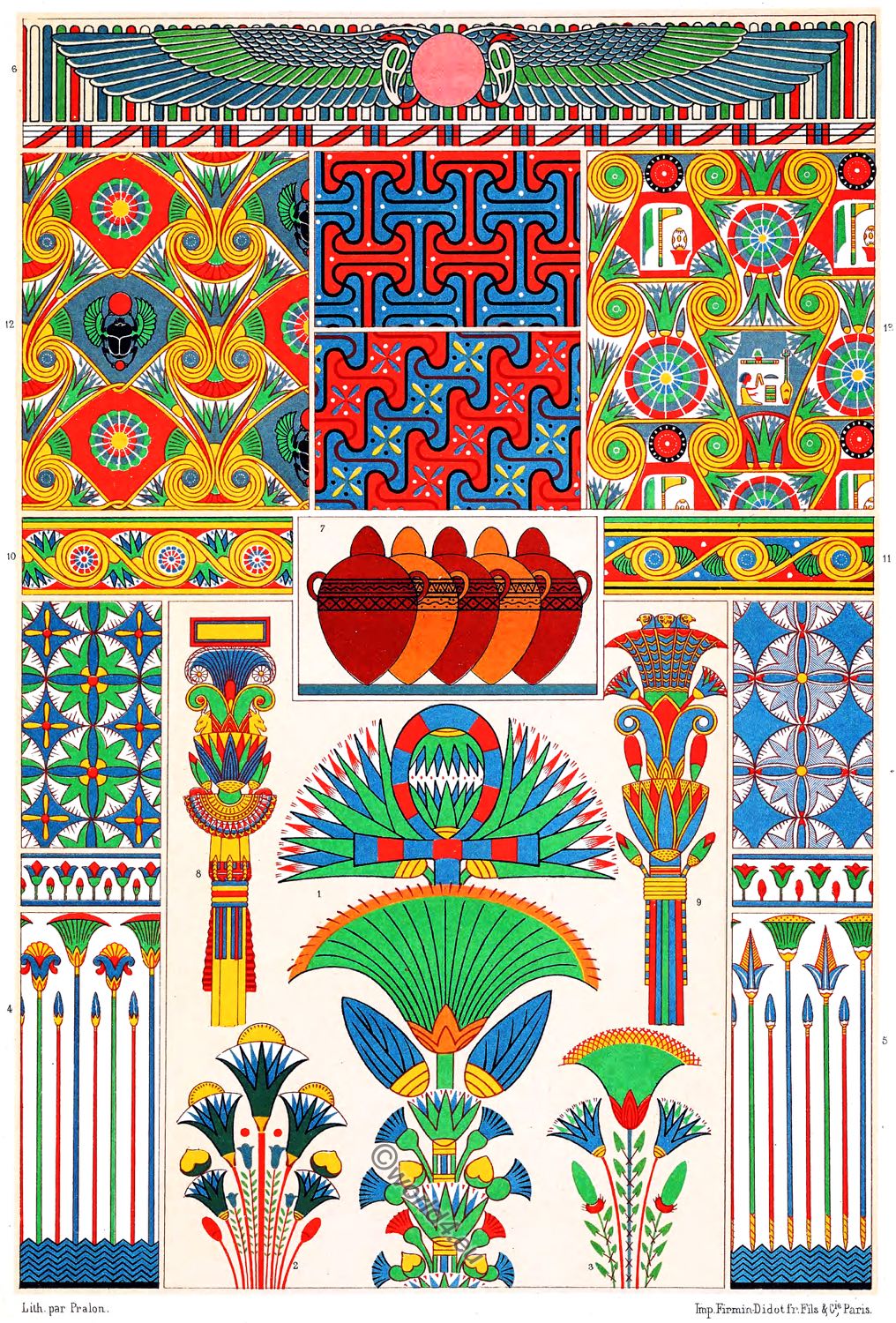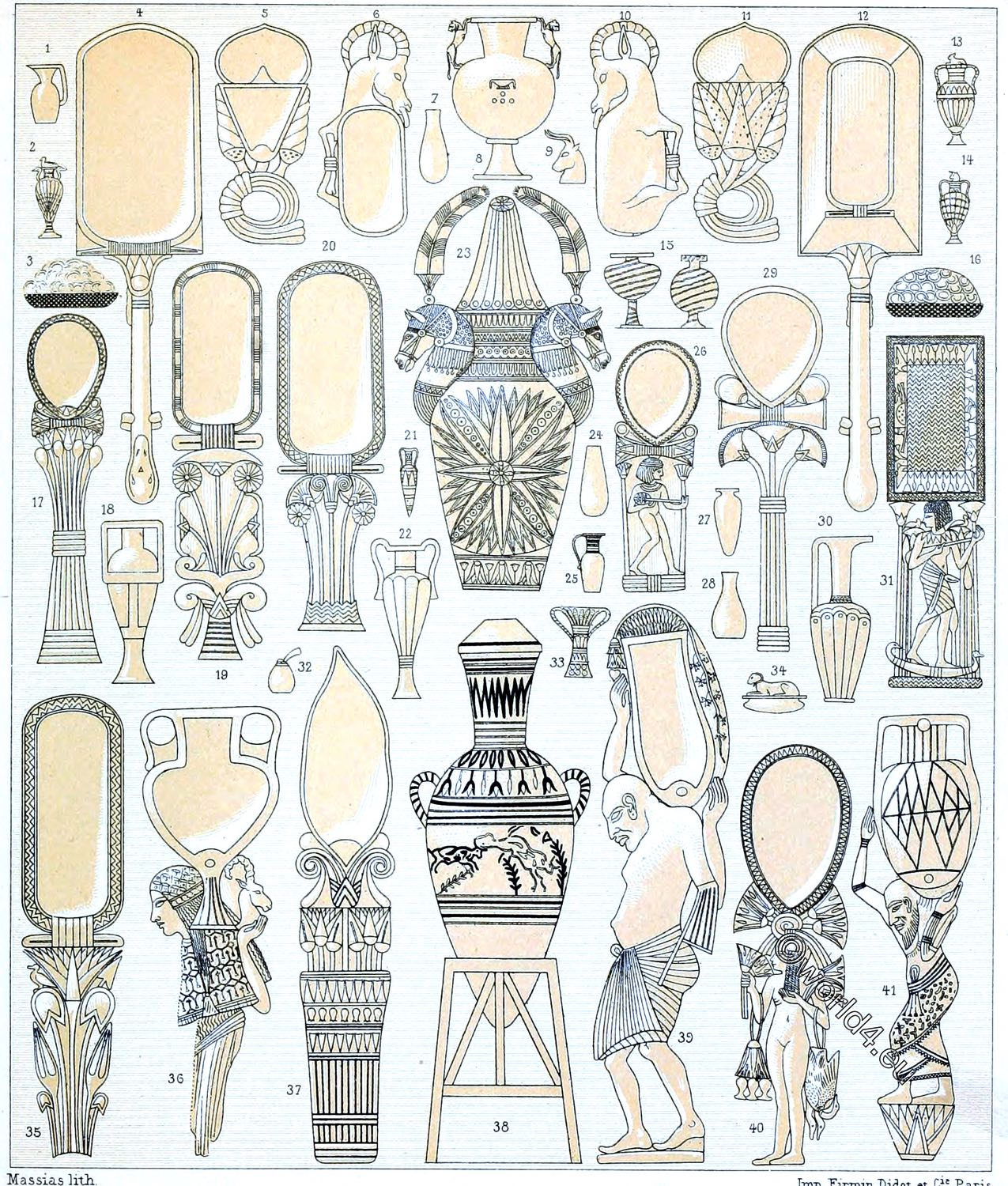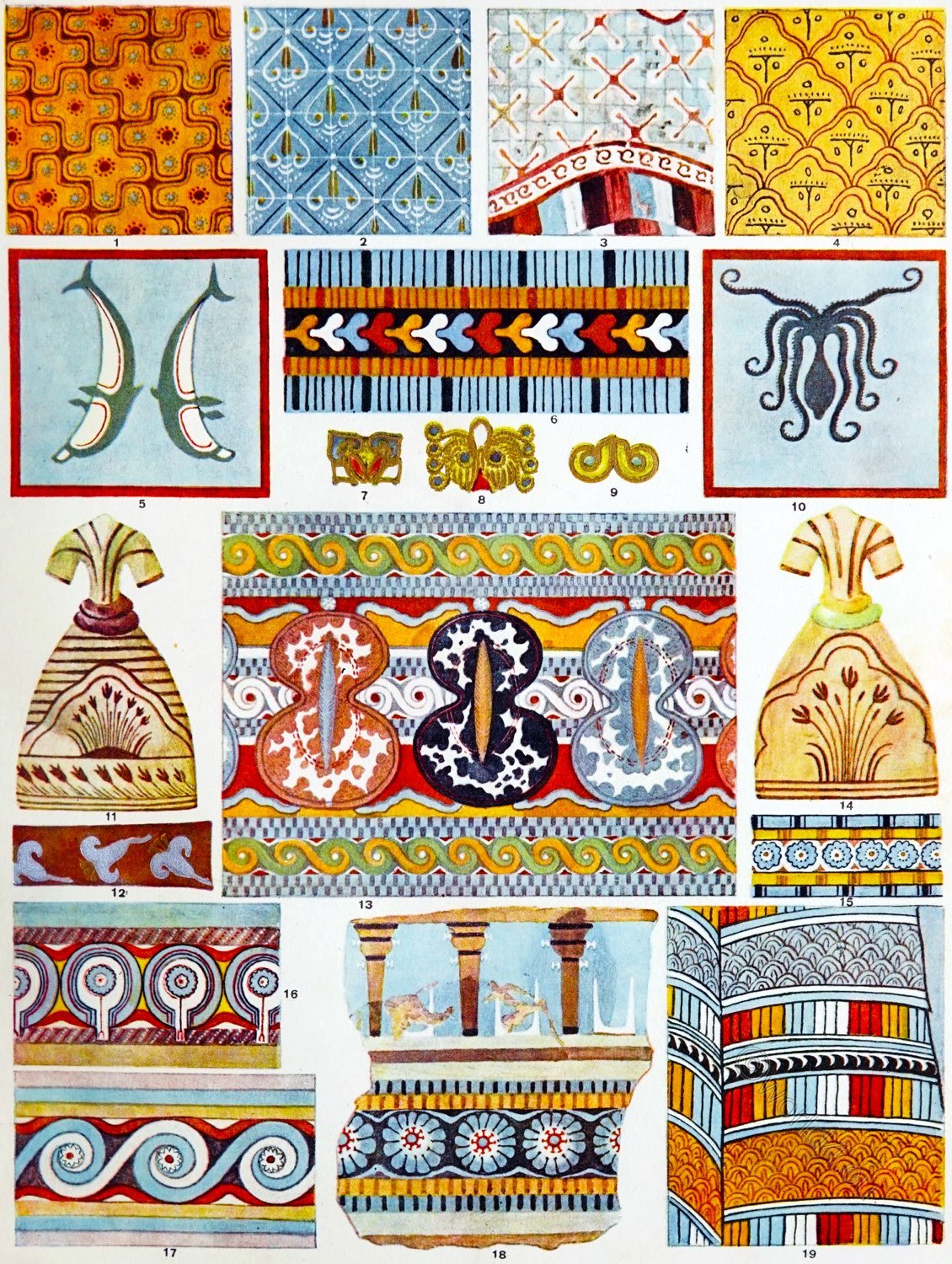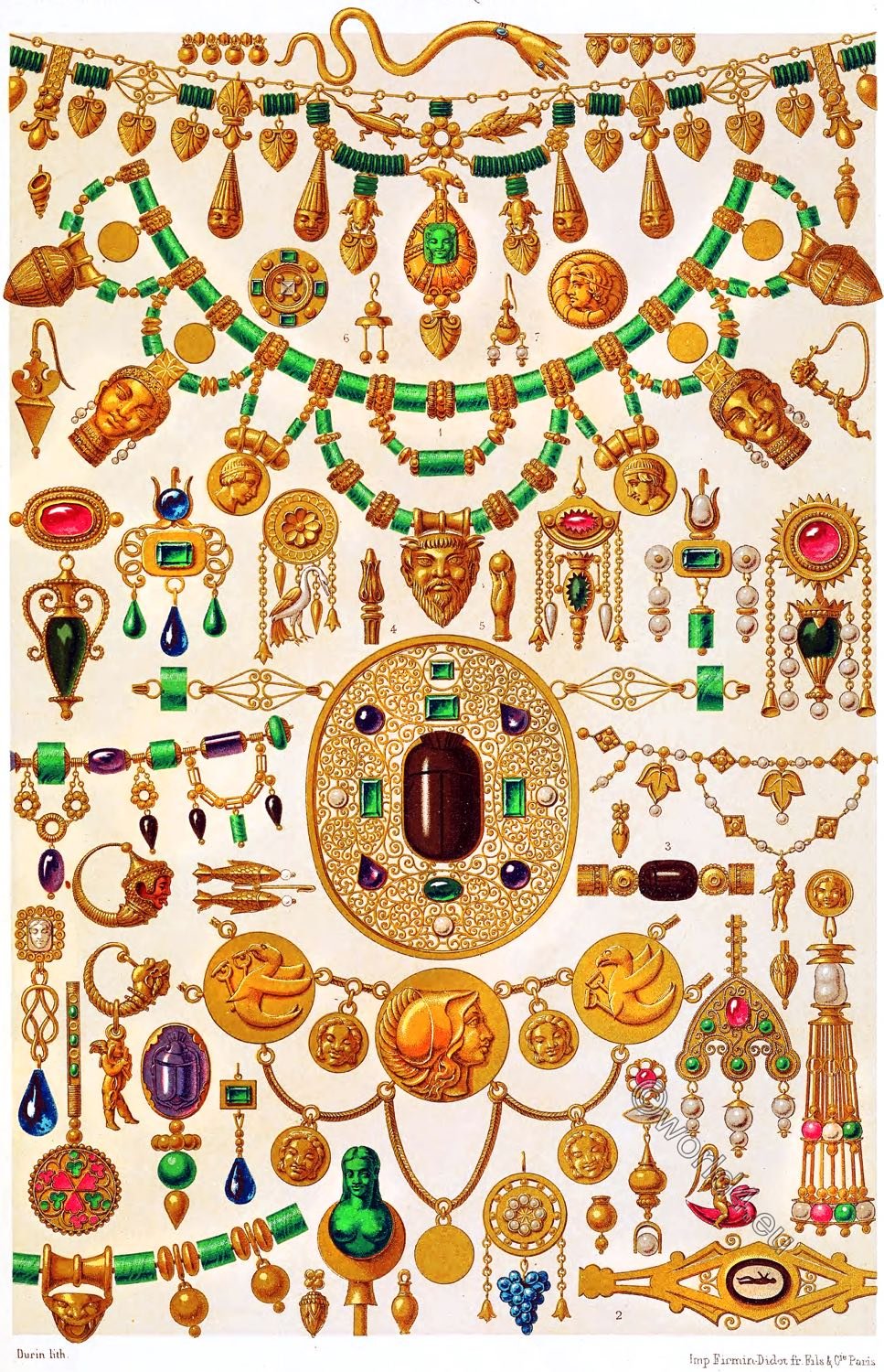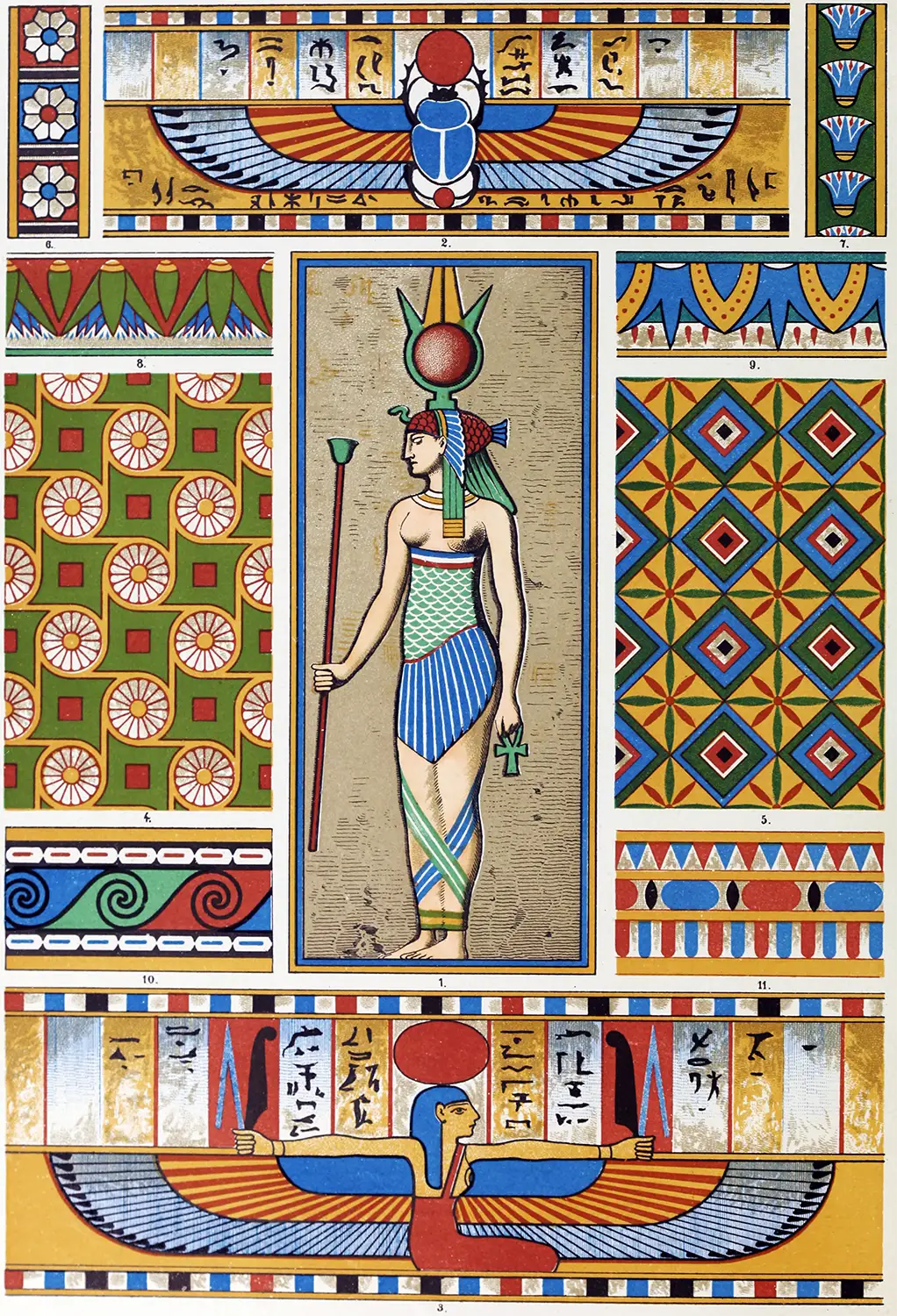
Plate I
Egyptian.
Painting and Plastic Art.
The mode of decoration with the Egyptians, the most ancient of civilised nations, comprises symbolic figure-subjects chiefly in conjunction with hieroglyphics. Columns and walls were used to write thereon a pictorial chronicle of religious and every-day-life.
The figure representations on the outer walls of Egyptian buildings consist of very flat, frequently painted reliefs, called coilanaglyphs *). The contours are deep cut, the object is treated plastically, but in such a way, that the most prominent parts remain on the same plane as the surface of the wall.
*) Sculpture or engraving hollowed out in such a way that the relief of the figures is barely flush with the level of the adjoining flat surfaces. Bas-relief in hollow.
Plate I Fig. 1 . The paintings themselves are carried out in flat tints without any modelling at all, they have sharp contours and show a rich and harmonious combination of colours.
From the vegetable and animal kingdoms in Egyptian ornamentation the most frequently employed are: the lotus flower, (an attribute of Isis and a symbol of the generating power of nature); the Nymphaea, the papyrus, the reed etc.; moreover the ram, the sparrow-hawk and especially the dung-beetle — Scarabaeus —
Pl. I Fig. 2. Another symbol, frequently used, is the winged disk of the sun.
The capitals in Pl. 2 show also the application of the above mentioned vegetable motives, viz. Fig. 3 of the papyrus, Fig. 4 a capital composed of buds, the shaft representing a bundle of wood-stems. Fig. 5 palm-leaves and Fig. 6 a bud of the papyrus.
Fig. I. Painting of figure from a column of the temple at Denderah.
” ” 2 and 3. Paintings from mummy-cases.
” ” 4 and 5. From a mummy-case in the Louvre, Paris.
” ” 6. Painted border from sarcophagus.
” ” 7. Border from a mummy-case. British Museum, London.
” ” 8. Ornament on a wooden sarcophagus. British Museum.
” ” 9. Border on a mummy-case. British Museum.
10. Portion of a border. British Museum.
11. Painting on a sarcophagus. British Museum.
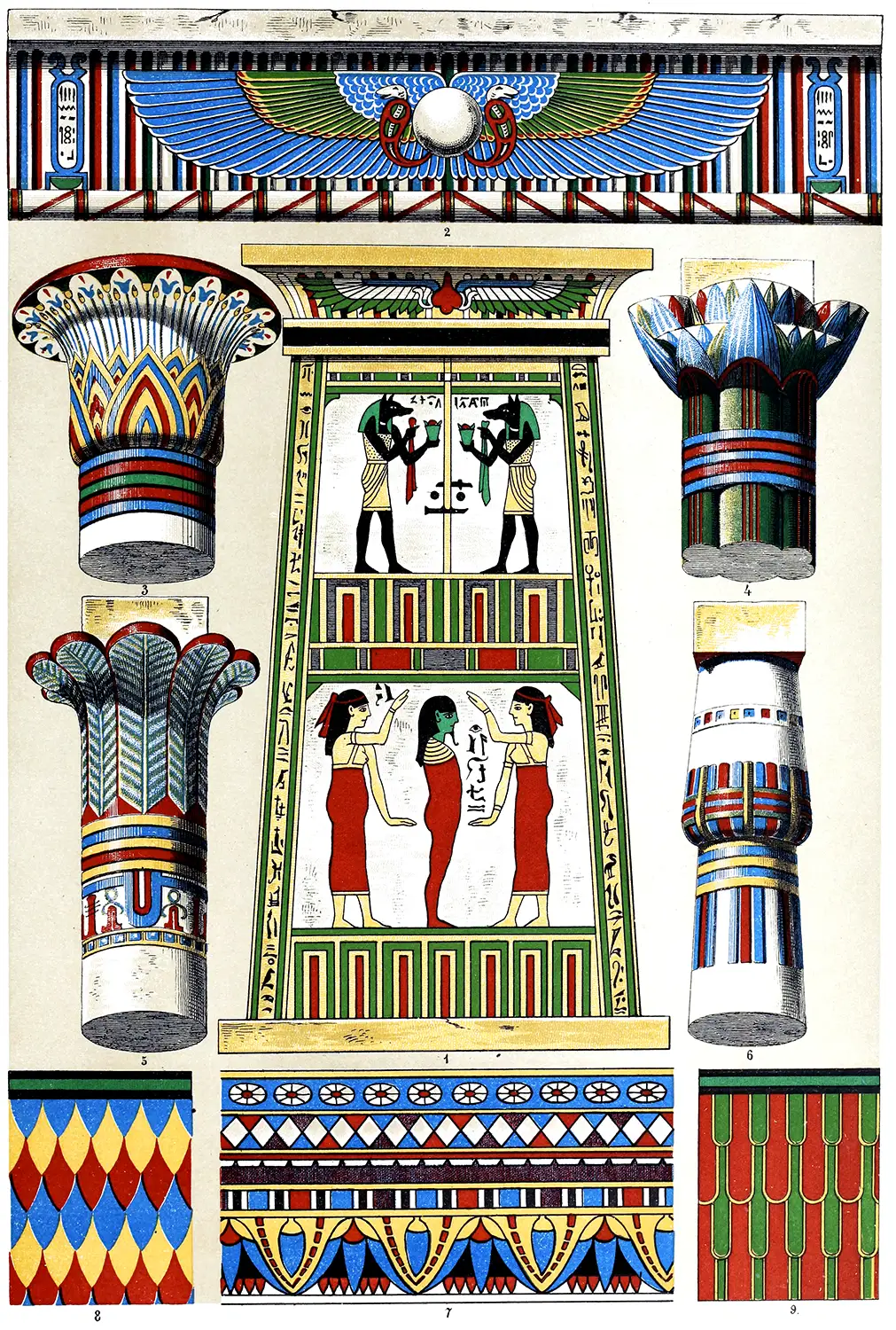
Plate II
Egyptian.
Architecture and Painting.
- Pylon (entrance-gate) with figure representations and hieroglyphics. Louvre, Paris.
- Cornice of the entablature of the great temple at Philae. Sculpture and painting.
- Capital from the temple at Luxor, representing full-blown papyrus. 1200 B. Chr.
- Capital from a temple at Thebes. (Lotus bud.)
- Capital from a portico at Edfu. (Representing a palm-tree.)
- Capital from Thebes, 12 B. Chr. Represents a lotus bud.
- Munmy-case-painting.
- and 9. Tile designs. Paintings from tomb-chambers. Louvre, Paris.
Source: Ornamental treasures: a collection of designs from India, China, Japan, Italy, Germany, France. etc., of all styles and times by H. Dolmetsch. New York: R. Davis 1912.
Discover more from World4 Costume Culture History
Subscribe to get the latest posts sent to your email.

